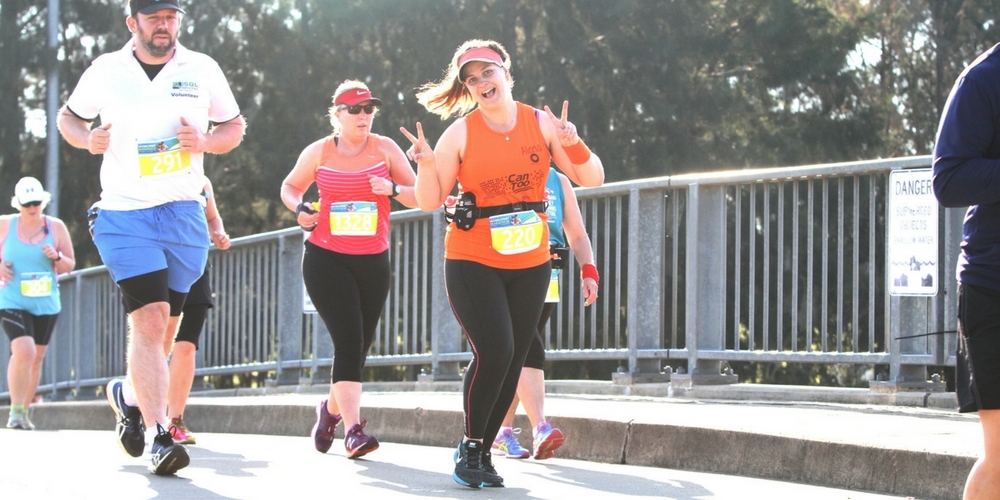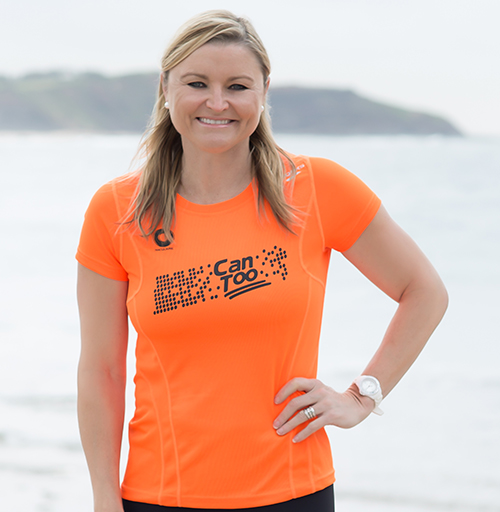
PICTURE: Alana is a former Team Captain for one Can Too Foundation's 10km programs
So you want to run 10km? Great! Committing and making the initial decision is the first and most important step.
If you’re signing up for our
This article will provide some practical advice, debunk some myths, and reassure you that what you’re setting out to do is totally achievable!
Make Sure Your Feet Are Fighting Fit With the Right Shoes.
Simple, supportive and comfortable. That’s what you need to start with.
We’re not all born with natural springs in our feet like Usain Bolt, so the most important thing you can do for your feet
For your first pair of runners, go to a proper running store (a list of Can Too affiliated stores can be found here). Just walking in them will not give you the best indication of how they will feel when you run. The best stores will let you get on a treadmill or go for a run around the block to ensure that they’re the right shoe for you!
On Your Marks … Get Set … GO!
Running is great for your fitness, your mental health, and provides you with a natural ‘high’ –which is fantastic for your general sense of well-being. But, it’s also challenging, especially when you haven’t done it in a while.
We get it, life gets in the way and sometimes your own fitness takes second fiddle. But if you can’t, for whatever reason, get yourself to a professionally coached 10km training session, here are some of my tried and true methods to get yourself running in no time!
A sensible and safe way to get started is to run/walk. Set yourself a time-based target (e.g. half an hour) and just comfortably jog (slower is better) until you need to walk. When you need to walk, keep walking (don’t stop), recover your breath, get your heart rate under control, and then start jogging again. Rinse and repeat until the half hour is up.
You may only get 5 or 10 minutes of total jogging out of your 1st attempt – that is completely normal at this stage! Keep at this a few times per week and you will gradually see the time spent exercising shifting more towards running than walking.
If you need additional motivation, why not convince someone to join you? If you sign up friends to Can Too, you’ll get rewarded! If you’re not in one of our 10km programs, a running buddy can help you pass the time, and the kilometres will seem to fly along!
Soreness Comes With Training
The old expression ‘no pain, no gain’ has a certain amount of truth to it.
If you haven’t trained for a while, it’s perfectly normal for muscle soreness to reach its peak 1 or 2 days after the exercise, while the muscles recover. Despite the discomfort, this is your body adapting, so hang in there… it does get better in the weeks ahead!
A word of caution though: there’s a big difference between muscles soreness and doing yourself an injury.
While exercising, soreness should gradually come into the different leg muscles and may grow to a deep ‘burn’ (especially if doing hills, sprints or stairs). If you get a sudden shooting pain, it could be a cramp or a tear.
Do not push through this kind of pain.
It’s always best to rest, recover and be back out again in a day or 2 than to risk a serious injury (which costs both time and money to fix).
It’s Not Just About Running!
Part of any balanced training program is interval training. It’s the best ‘bang for
An example might be 8 sets of 400m (at 80% effort) with a 1min recovery between each set.
Interval training is very rewarding for your overall fitness, and at increasing your running pace – but as it is also tough on the body. Take comfort in the fact that you’ll only be tackling one of these training sessions each week!
Last but not least, run at your own pace. Pushing yourself hard is fine…in moderation. Don’t worry about what other runners are doing, it’s your journey.









